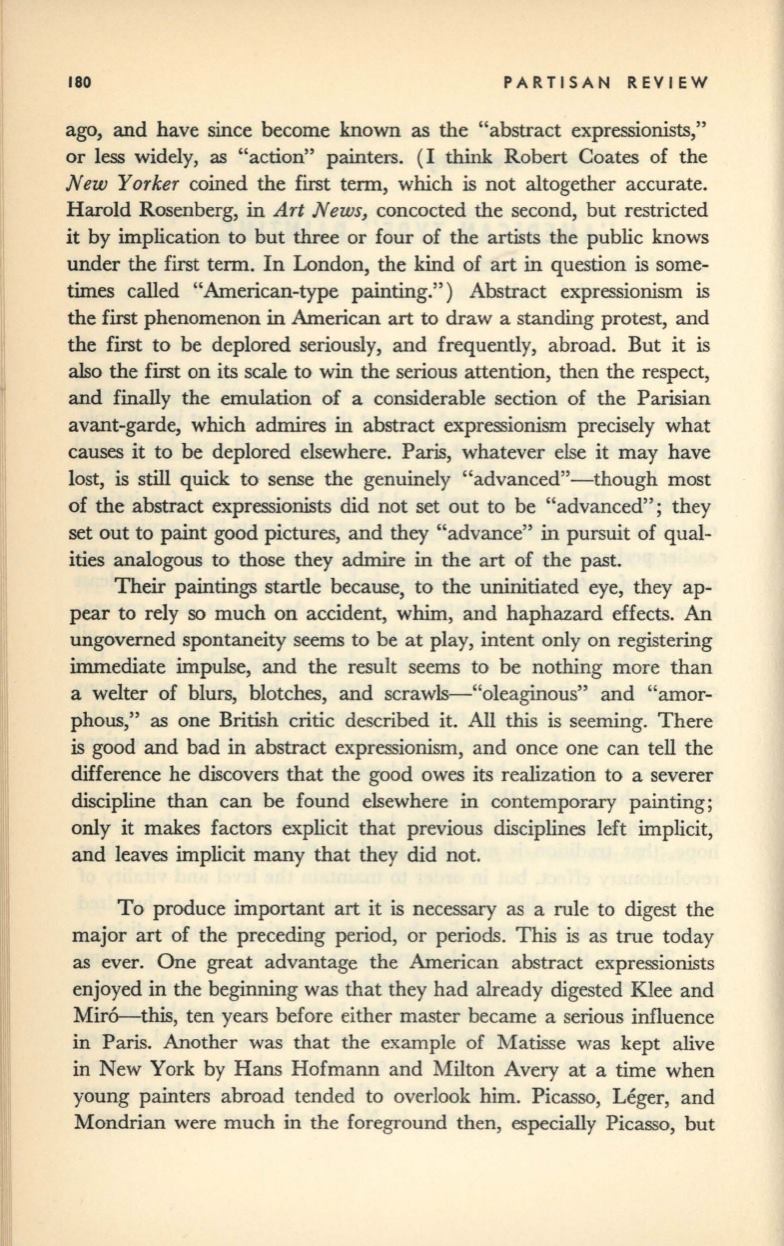
180
PARTISAN REVIEW
ago, and have since become known as the "abstract expressionists,"
or less widely, as "action" painters. (I think Robert Coates of the
New Yorker
coined the first term, which is not altogether accurate.
Harold Rosenberg, in
Art News,
concocted the second, but restricted
it by implication to but three or four of the artists the public knows
under the first term. In London, the kind of art in question is some–
times called "American-type painting.") Abstract expressionism
is
the first phenomenon in American art to draw a standing protest, and
the first to be deplored seriously, and frequently, abroad. But it
is
also the first on its scale to win the serious attention, then the respect,
and finally the emulation of a considerable section of the Parisian
avant-garde, which admires in abstract expressionism precisely what
causes it to be deplored elsewhere. Paris, whatever else it may have
lost, is still quick to sense the genuinely "advanced"-though most
of the abstract expressionists did not set out to be "advanced"; they
set out to paint good pictures, and they "advance" in pursuit of qual–
ities analogous to those they admire in the art of the past.
Their paintings startle because, to the uninitiated eye, they ap–
pear to rely so much on accident, whim, and haphazard effects. An
ungoverned spontaneity seems to be at play, intent only on registering
immediate impulse, and the result seems to be nothing more than
a welter of blurs, blotches, and scrawls-"oleaginous" and "amor–
phous," as one British critic described it. All this is seeming. There
is good and bad in abstract expressionism, and once one can tell the
difference he discovers that the good owes its realization to a severer
discipline than can be found elsewhere in contemporary painting;
only it makes factors explicit that previous disciplines left implicit,
and leaves implicit many that they did not.
To produce important art it is necessary as a rule to digest the
major art of the preceding period, or periods. This is as true today
as ever. One great advantage the American abstract expressionists
enjoyed in the beginning was that they had already digested Klee and
Mir6--this, ten years before either master became a serious influence
in Paris. Another was that the example of Matisse was kept alive
in New York by Hans Hofmann and Milton Avery at a time when
young painters abroad tended to overlook him. Picasso, Leger, and
Mondrian were much in the foreground then, especially Picasso, but


